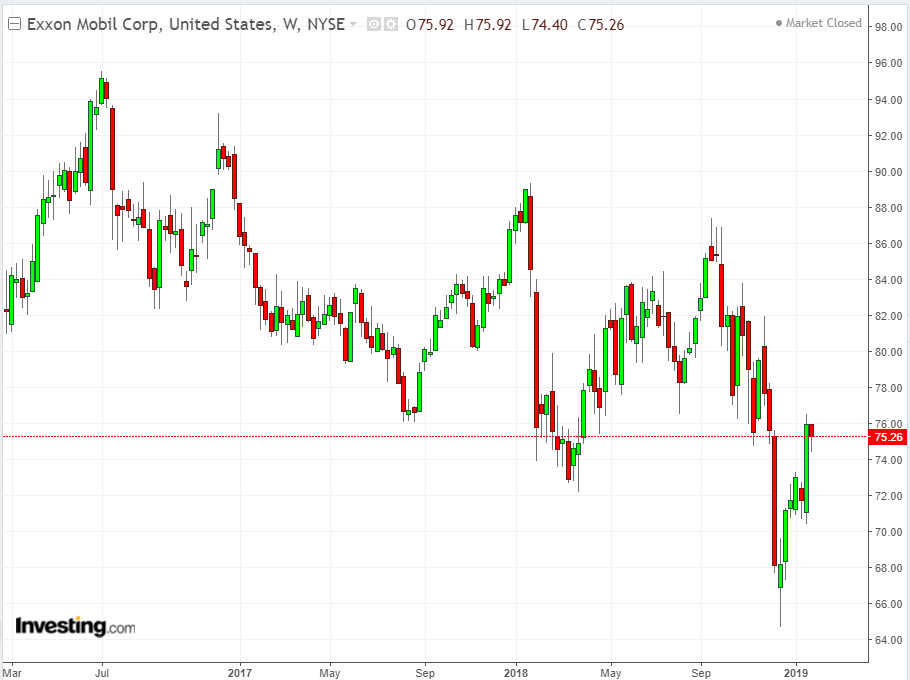Among U.S. oil and gas majors, ExxonMobil (NYSE:XOM) has for years been considered a laggard. Shares have generally underperformed in both short- and long-term market and sector rallies on concerns that the company lacked direction, even as its output kept declining.

That may be about to change. The company’s impressive earnings report this past Friday, which beat on EPS, also showed that during the past two quarters its output of oil and natural gas grew slightly.
This could signal that ExxonMobil shares are finally ready to fully participate in future rallies if oil markets continue their recovery in 2019, after a tumultuous 2018. Since hitting their December low of $64.65, shares—which closed yesterday at $75.26—have rebounded at a pace that isn’t far behind its rivals.
During that period, ExxonMobil's stock is up more than 16% while its closest rival, Chevron (NYSE:CVX), gained about 18%. Even more exciting for investors, Exxon Mobil is finally showing some results in resolving its production issues.
In the final months of 2018, the company's production of oil and gas rose above 4 million barrels a day for the first time since early 2017. In the fourth-quarter, the company showed a profit of $1.41 a share, beating analysts’ consensus forecast of $1.08.
Cash flow from operations for the year, a key measure for investors, rose to $36 billion. That was enough to cover rising capital expenditures of almost $21 billion as well as the company's 4.32% yielding dividend, which amounts to almost $14 billion in annual payouts.
Serious Spending to Fuel Growth
Despite these positive signs, one thing investors must understand before acquiring shares of any oil supermajors is that this industry is currently in a low-growth phase. As such the companies that can generate more income from operational readiness, technological advances and cost containments will be the ones rewarded by investors.
In our view, ExxonMobil meets these parameters. The company has taken a long-term approach to improving its growth outlook, diverging from other large producers that are trying to stabilize their shares by cutting back on major spending and putting more cash into investor pockets via share buybacks and payouts.
Chevron, for example, announced early this month that it was raising its quarterly dividend to $1.19 per share from $1.12 in the prior quarter. Its board has also authorized a $25 billion share repurchase program.
Rewarding investors with more cash may propel share prices in the short-run, but that strategy risks compromising future growth. Exxon's CEO Darren Woods takes a longer term view. He believes the oil industry needs a massive injection of fresh investment to meet the new challenges it faces, making this the wrong time to return cash to investors.
Woods has embarked on a $230 billion plan to revitalize the oil giant, targeting drilling opportunities around the world. These include shale wells in West Texas, natural gas export facilities in Papua New Guinea, a string of giant discoveries in the South American nation of Guyana, and developments in Mozambique and Brazil.
Bottom Line
Exxon’s growth projects are extremely attractive. They've undoubtedly set up the company for future expansion. However it’s also important to remember that these investments won’t pay off in the near term.
If your investing horizon is longer term and you want to add an integrated oil giant which has a diversified portfolio of assets to your holdings, you should consider ExxonMobil. Their annual dividend is attractive, particularly now that Exxon has regained its earnings momentum, which should fuel share growth going forward.
